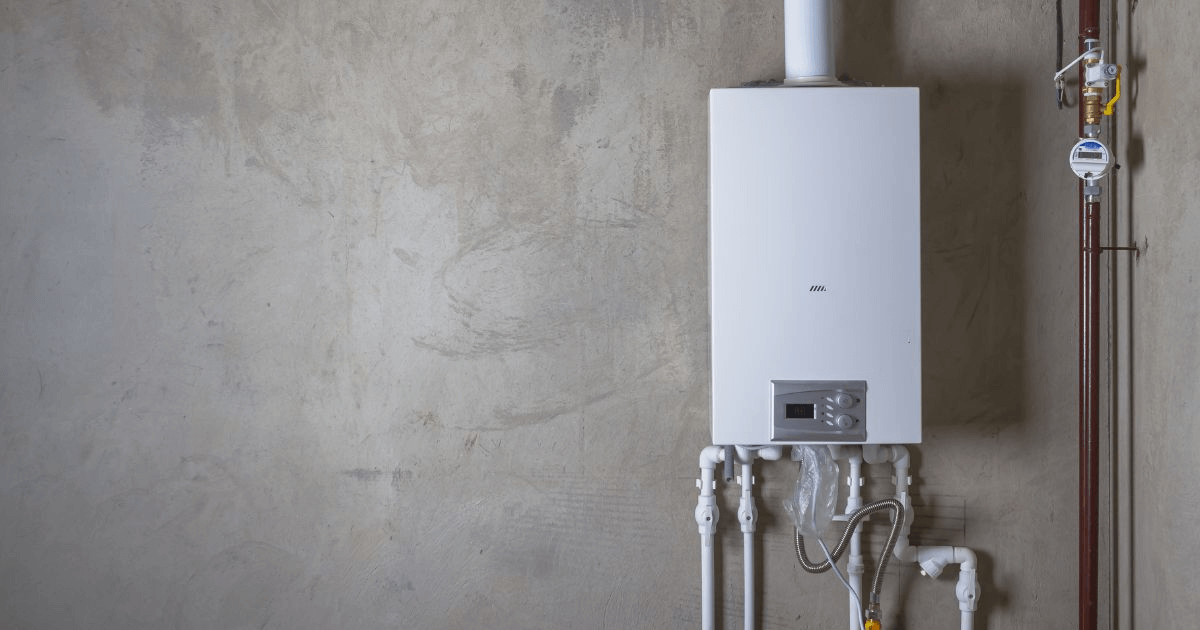Water heaters work tirelessly behind the scenes, delivering hot water for showers, dishes, and laundry. Most homeowners take this convenience for granted until something goes wrong. Regular maintenance keeps your water heater running efficiently, extends its lifespan, and prevents costly emergency repairs. Keep reading to discover water heater maintenance tips for every homeowner.
Know Your Water Heater Type
Different water heater types require specific maintenance approaches. Tank water heaters store heated water in an insulated tank, while tankless models heat water on demand. Gas water heaters use natural gas or propane as fuel sources, whereas electric models rely on heating elements powered by electricity.
Tank water heaters typically last 8 to 12 years with proper care, while tankless units can operate efficiently for 15 to 20 years. Gas models heat water faster than electric versions but require additional safety considerations due to combustion components. Understanding your specific model helps you perform appropriate maintenance tasks and recognize potential problems early.
Location matters too. Water heaters installed in basements face different challenges than those in attics or utility closets. Temperature fluctuations, humidity levels, and accessibility all influence maintenance requirements and frequency.
Water Heater Maintenance Tasks You Can Do Yourself
Let’s explore some essential DIY water heater maintenance tasks.
Test the Temperature and Pressure Relief Valve
The temperature and pressure relief valve serves as a critical safety component. This valve opens automatically when water temperature exceeds 210 degrees Fahrenheit or pressure surpasses 150 psi. Testing this valve every six months prevents dangerous pressure buildup.
Start by turning off power to electric units or setting gas models to pilot mode. Lift the valve’s lever partially to allow water to flow out, then release it. Water should flow freely when lifted and stop completely when released. If water continues dripping or won’t flow at all, replace the valve immediately.
Drain and Flush the Tank Annually
Sediment accumulation reduces heating efficiency and can cause premature tank failure. Minerals from hard water settle at the bottom, creating an insulating layer that forces your system to work harder. Annual flushing removes these deposits and maintains optimal performance.
Connect a garden hose to the drain valve at the tank’s bottom. Open the valve and allow water to flow until it runs clear. This process typically takes 15 to 30 minutes depending on sediment levels. Some systems require multiple flushes to remove stubborn buildup.
Check the Anode Rod Every Three Years
The anode rod attracts corrosive elements that would otherwise attack your tank’s steel lining. This sacrificial component gradually deteriorates, protecting your investment. Most anode rods require replacement every three to five years, although water quality significantly affects their lifespan.
Remove the rod using a socket wrench and inspect its condition. Replace it if more than six inches of core wire shows or if the rod measures less than half an inch thick. Installing a new anode rod costs much less than replacing an entire tank due to corrosion damage.
Inspect Water Connections and Fittings
Loose connections cause leaks that waste water and potentially damage surrounding areas. Check all visible pipes, fittings, and connections for signs of moisture or corrosion. Tighten loose connections carefully, but avoid overtightening which can damage threads or crack fittings.
Your water heater could be leaking from multiple locations including the tank itself, inlet and outlet connections, or the drain valve. Small leaks often indicate bigger problems developing, so address them promptly rather than waiting for major failures.
Maintain Proper Clearance and Ventilation
Water heaters need adequate space for safe operation and maintenance access. Gas models require proper ventilation to prevent carbon monoxide buildup, while all units need clearance for heat dissipation. Remove stored items from around your water heater and keep the area clean.
Check venting systems on gas units for obstructions, damage, or improper connections. Blocked vents create serious safety hazards and reduce heating efficiency. Electric units still need clearance for safety and maintenance access, even without combustion concerns.
Recognize Common Water Heater Problems Before They Worsen
Recognizing these common water heater problems can help prevent them from becoming costly issues.
Temperature Fluctuations and Inadequate Hot Water
Inconsistent water temperature often indicates failing heating elements in electric units or thermostat problems in gas models. Sediment buildup can also cause temperature issues by insulating heating components from the water they’re supposed to warm.
If hot water runs out faster than usual, check your thermostat settings first. The recommended temperature is 120 degrees Fahrenheit for safety and efficiency. Higher settings waste energy and create scalding risks, while lower temperatures may not provide adequate hot water for household needs.
Strange Noises From Your Water Heater
Rumbling, popping, or crackling sounds typically indicate sediment buildup on heating elements or tank bottoms. As water heats, it bubbles up through sediment layers, creating these characteristic noises. Regular flushing prevents most noise issues and improves efficiency.
Whistling or hissing sounds from gas units may indicate venting problems or issues with the gas supply. These sounds warrant immediate professional attention due to potential safety hazards. Electric units making high-pitched noises often have failing heating elements that need replacement.
Water Quality Changes and Discoloration
Rusty or discolored water signals corrosion inside your tank or pipes. Brown or red water usually indicates rust, while black water suggests bacteria growth or deteriorating anode rods. Metallic tastes or odors also point to corrosion issues requiring prompt attention.
Cloudy or milky water often results from air in the lines or mineral deposits. This problem typically resolves itself after running water for several minutes. Persistent cloudiness may indicate more serious issues with your water supply or treatment system.
Visible Leaks and Water Damage
Your water heater will give you signs that it’s leaking. Check around your water heater regularly for puddles, moisture, or water stains. Even minor leaks indicate deteriorating components that need attention before they cause significant damage.
Tank leaks usually mean replacement time, especially for older units. Connection leaks often require simple repairs, but they can cause extensive water damage if ignored. Document any leaks with photos and contact professionals for assessment and repair recommendations.
When Professional Water Heater Service Becomes Necessary
Sometimes, you need to involve a professional.
Gas Line and Electrical Work
Gas line connections, electrical wiring, and control system repairs require professional expertise. Attempting these repairs without proper training creates serious safety hazards and may violate local building codes. Licensed technicians have the tools and knowledge to perform these tasks safely.
Gas leaks present immediate dangers requiring emergency professional response. If you smell gas near your water heater, shut off the gas supply immediately and contact your utility company or a licensed plumber. Never attempt to repair gas leaks yourself.
Major Component Replacements
Heating elements, thermostats, and control valves eventually wear out and need replacement. While some homeowners can handle these tasks, professional installation guarantees proper operation and maintains warranty coverage. Incorrect installation can damage your system or create safety hazards.
Tank replacement requires professional installation to meet local codes and safety standards. New installations often require permits and inspections, making professional service necessary. Attempting tank replacement without proper experience can result in property damage or injury.
System Upgrades and Efficiency Improvements
Upgrading to more efficient models or switching between fuel types requires professional expertise. Sizing calculations, venting modifications, and utility connections all need professional attention. Proper installation maximizes efficiency and prevents future problems.
Professional maintenance contracts provide regular inspections and tune-ups that extend system life. These services often include priority scheduling for repairs and discounts on replacement parts. Regular professional maintenance complements your DIY efforts and catches problems early.
Maximize Your Water Heater’s Performance and Lifespan
Consistent maintenance prevents most water heater problems and extends equipment life significantly. Simple tasks like annual flushing and regular inspections cost little but provide substantial benefits. Combining DIY maintenance with professional service creates the best results for your investment.
Start implementing these water heater maintenance practices immediately rather than waiting for problems to develop. Create a maintenance schedule that works with your routine and stick to it consistently. Document your maintenance activities to track patterns and identify potential issues early.
Remember that water heater maintenance protects your home from water damage while reducing energy costs. Well-maintained systems operate more efficiently, saving money on utility bills while providing reliable hot water service. Take action today to protect your investment and avoid costly emergency repairs.





















